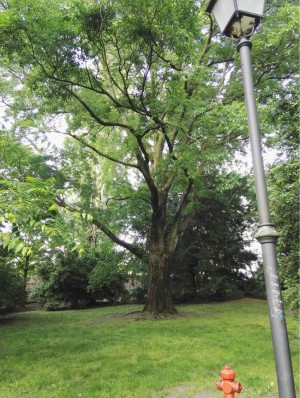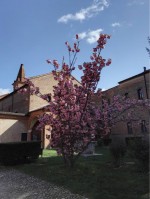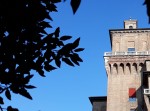Large Trees
These mature trees are precious evidence of a natural environment and now need protection, but must be considered the result of a correct relationship between plant and animal life.
Protection of Veteran Trees
Veteran or legacy trees are those recognised for their age, historical and naturalistic importance, and which comprise the memory and tradition of a place. For this reason they are subject to protection policies. For example, Italian law no. 10 of 14 January 2013 on the development of urban spaces (article 7) requires Italian regions and municipalities to draft and update a list of such trees, and also instituted a national list. The Emilia-Romagna region provided for the identification of criteria for the recording of veteran trees in order to assign the characteristics of such trees, which can be divided into the following:
- Natural qualities linked to the age and size of the tree
- Natural qualities in terms of shape and stature
- Ecological value
- Botanical rarity
- Vegetative architecture
- Landscape value
- Historical, cultural and/or religious value
These directives have allowed the creation of a list to subsequently intervene with direct actions to safeguard and restore veteran trees, of which there are over 2,000 species in Italy according to the Ministry of Agricultural, Food and Forestry Policies (Mipaf).
The Age of Veteran Trees
In order to establish the age of a tree, it is possible to count the number of rings in its trunk if it has already been cut down, but for living specimens an approximate number can be obtained by dividing the circumference of the trunk by 2.5. The maximum age that these trees can reach depends on the genetic and biological characteristics of each species, as well as the complex environmental interactions of the location where each grows (climate, soil etc.). (1). Some species such as the larch, cypress, yew, olive and chestnut can live as long as a millennium, while oak, elm, spruce, pine, beech and plane trees can live for centuries. Fruit trees, such as the cherry, do not exceed 100 years of life, however. These genuine natural monuments can be safeguarded by monitoring their state of health to prevent certain diseases.
Veteran Trees in Ferrara
In Italy, the first records date back to the 1970s. Since then, significant progress has been made in monitoring techniques which has prevented the disappearance of woodlands and the loss of various veteran trees, despite the transformation of the landscape due to industrialisation. It is not possible to demand the immortality of these species when faced with climate change of human intervention, and yet knowledge and awareness will sensitise future decisions in terms of their protection. Currently Ferrara is home to seven veteran trees, dating back centuries, as recognised by Article 7 of Italian Law 14/01/2013.
Parco Massari is home to three cedar of Lebanon trees and a hackberry, the Ariostea Library a majestic ginkgo biloba, while Palazzo Diamanti has a grey poplar. A veteran plane tree can be found in private grounds in the Fondo Reno area on the outskirts of the city.
Note
- Pianesi Mario, Guidi Sergio, Gulminelli Andrea, Battaglia Domenico Plauto, Tassi Franco, Alberi sacri: alberi secolari in Italia, La Pica 2010, pp 4.
Sitography
Related places
Related Themes
Compiling entity
- Museo Civico di Storia Naturale di Ferrara
Author
- Museo Civico di Storia Naturale di Ferrara



